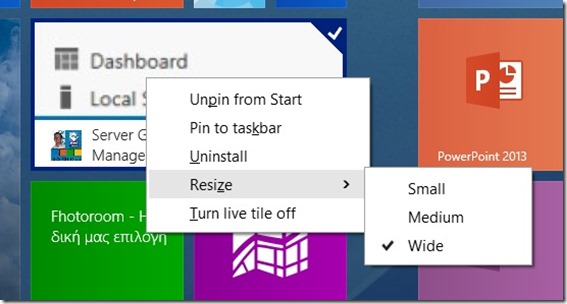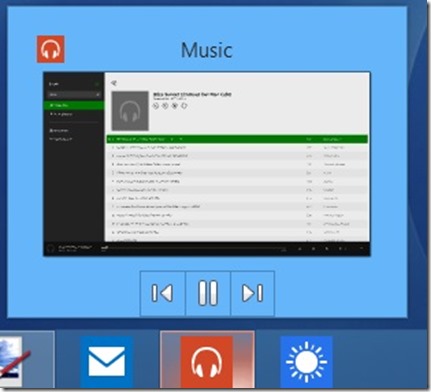Windows 8.1 Update is available, so it was a good idea to install it and see what are the improvements, mainly related to users without touch screen laptops. I actually wrote this blog post a long time ago, but since this info for us MVPs was under NDA, I had to expect the public announcement during Build conference. Yesterday Joe Belfiore, Microsoft Corporate Vice President Operating Systems Group, demonstrated on Build 2014 stage some cool new features that are included in this update. So the official name of this update is simply Windows 8.1 Update and we’ve been told that it will be available through the usual channels like Microsoft Update and WSUS (if you have one in your network).
When you perform the update you actually install these in order:
1. KB2919442
2. KB2919355
3. KB2932046
4. KB2937592
5. KB2938439
6. KB2949621
Windows 8.1 Update is free for Windows 8.1 users, and as soon as you install the required updates, here you are: your computer will start directly to the traditional windows desktop (at least this is what happened on my HP laptop with no touch screen). This setting is configurable though, through the settings of the Taskbar:
The next obvious change is the addition of a “shutdown” option next to your account picture in the Start screen:
We now can pin to the taskbar not only the “old-fashioned” windows applications, but even the new tile apps, like Weather, Music, Store, etc:
In fact, when you right-click on the application’s tile, you get a new menu:
So you can pin to taskbar any application that you like:
If the application supports it, you get some additional controls, for example the Music app gives you some additional controls:
All applications now have an “X” that will let you close the application, located on the upper side of the screen:
SkyDrive is now renamed to OneDrive:
Internet Explorer has some changes regarding the address bar and tabs location:
Even if you are in a Modern App environment (in this example we are browsing the Windows Store), if you drag your mouse to the bottom of the screen, you can see the taskbar:
Another good feature that was missing is the ability to see the list of all the wireless networks that you’ve connected. This feature was removed but now is back, so you can select to manage known wireless networks and “forget” them. Simply navigate to the “Change PC Settings” section using the charms and go to the Networks section. Then you have to click on the “Manage known networks”:
There is a new feature related to Internet Explorer 11, regarding the compatibility settings. This new feature lets you specify through Group Policy which sites you want to appear in compatibility mode. This new feature is called “Internet Explorer Enterprise Mode”, or EMIE and obviously it will work on PCs that are joined to a domain. There are a lot of websites out there that appear correctly in IE8 but not in IE11, so now we have the choice to upgrade to IE11 without any problems. So you can create the XML file that will contain all the websites that you want to specify to run in Enterprise Mode. A sample XML file could be something like this:
<rules version=”3″>
<emie>
<domain>msdn.microsoft.com</domain>
<domain exclude=”false”>bing.com
<path exclude=”true”>images</path>
</domain>
<domain exclude=”true”>news.msn.com
<path exclude=”false”>pop-culture</path>
</domain>
<domain>microsoftstore.com</domain>
</emie>
</rules>
You can easily create this XML file using the Enterprise Mode Site List Manager tool, which is available for download through the Microsoft download site:
(screen capture taken from here, where you can read additional info)
The next step is to create a new GPO and navigate to Computer Configuration –> Admin Templates –> Windows Components –> Internet Explorer. Here you can find 2 settings:
-
Let Users turn on and use Enterprise Mode from the tools menu, so practically the user can turn on Enterprise Mode manually for the sites that do not appear correctly in IE11
-
Use the Enterprise Mode IE website list, to specify a preconfigured XML file with all the sites that we want to automatically appear in Enterprise Mode:
The XML file can reside anywhere, on a shared folder on a file server or in a public website. So, if you take a look at the contents of the XML file above, you can see that when I visit the Bing web page, Enterprise Mode is turned on automatically:
[/url]Take Our Poll




















0 Comments
Recommended Comments
There are no comments to display.